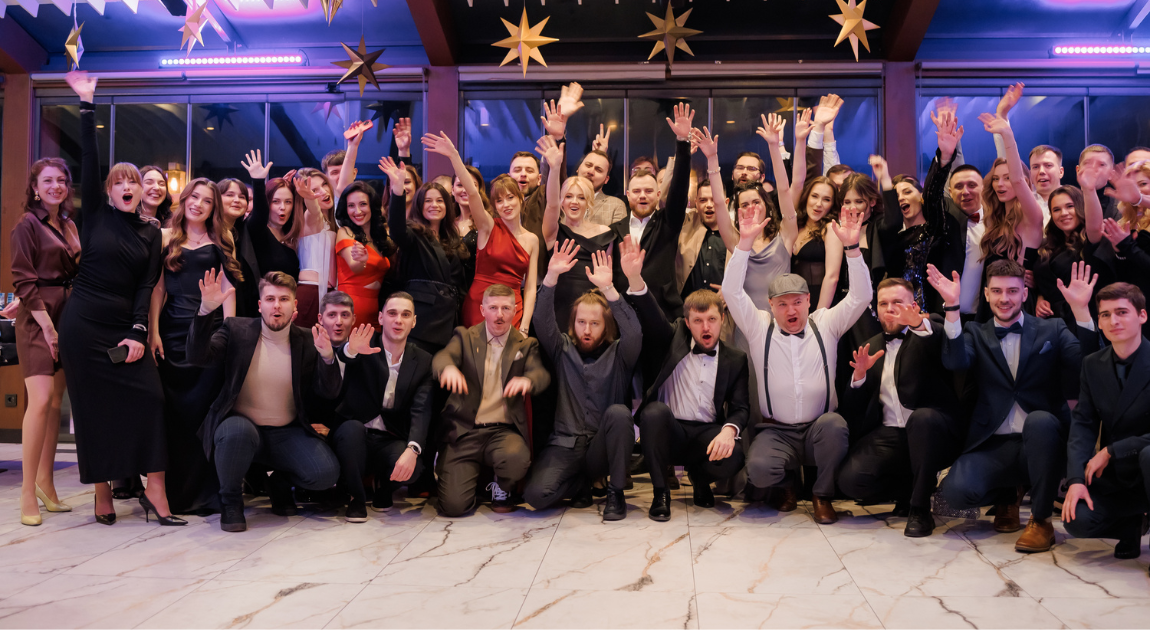By today, there are two distinct things in the world: software, on the one hand, and really good software, on the other. Note how we didn’t just say “good”, but “really good” – this is where the human factor comes into play. Even a decade ago, this “really” qualifier would have been a laughable superfluous adverb, something we’d all talk about condescendingly as part of the “popular mindset” that the (generally) college-educated software development expert should not heed.
Well guess what, it’s this “really” that matters now, when the market is oversaturated and solutions that simply work well are not “really” enough. Because at the end of the day, our software is meant to be adjusted to our own workflows, and so is the development process.
And even with powerful AI assistance to the coding process, there still is a major human factor in everything coded, even more so than ten years ago. This is where we all should really look into the social and mental lives of those who code and develop – to see where the magical willingness to invest a part of human ingenuity lies.
The corporate hustle culture has taught us all to put in 200%, but the trick is, it’s not the 200% in raw productivity. Robots can surpass us all at that, and yet fail to produce what we want. The part above the 100% lies in a different plane, and that is where our human lives matter a lot. Really a lot, that is.
We all want to do things that matter
There is a notable tendency in humans to do something that matters and changes something for the better. At a remote time in the past, this is what allowed us to survive among sabre-toothed tigers and the like; at present, it is what keeps us motivated to keep doing seemingly abstract things on a dark background of our screens.
Since Lionwood.software is a Ukrainian company, our current social meaning is obvious: helping the nation survive the invasion. In some two weeks during the summer of 2025, our community managed to raise about UAH 2M for one of the most crucial stretches of the war zone, not to mention the initiatives for the AFU in general. Some of our specialists have been distinguished with the SMILYVI award as veterans and volunteers, providing a source of inspiration for all of us.

However, it’s not just the wartime realities that make people work overtime of their own volition or seek ways to excel at their jobs otherwise. Before the full-scale invasion of Ukraine, the IT industry was already searching for outlets for social significance, like reducing plastic use or improving communal spaces or infrastructure. In fact, Lionwood’s most well-known product within Ukraine is the remote schooling platform NIT that was created during the COVID crisis.
In general, companies don’t really need a managerial decision on “inventing” their social impact – it is already there no matter what the board says. It is only a matter of helping the people who work here come together to fulfill their goals along the same vector more efficiently, and (ideally) find a way in which the company can assist organizationally.
This helps everyone in the long run – every single person co-writing this very text can attest that the feeling of significance helps work. Also, incidentally, this is why projects of medical or agricultural or logistics vector tend to fare much better in terms of extra value than ones of dubious social impact.
And this isn’t necessarily about observing people’s natural social initiatives and helping along the way, either. Importantly, there needs to be a social component in what the company is doing, which then attracts people who feel partial. Lionwood.software, for example, focuses on industries with high socioeconomic impact, like agriculture, logistics, and education.
“Can you see my screen?” (Communication)
We all have seen memes about meetings that could have been emails. One of the root causes of these costly faux pas is that we humans thrive on context. That’s why, with someone’s spouse or close friend, a nod can suffice where a 1.5-hour Zoom meeting would still not be enough for people who haven’t previously met: so many mutual contexts and patterns that are tedious to expand.
One thing is to hold meetings with business partners, where strategy is discussed and votes are cast on this or that decision; quite another, working on a daily basis on the thousands of mundane problems and solutions on the flip side of the strategy.
Practice shows it’s a good idea to foster offline communication within the team, so that the context and interpersonal implicit understanding gained there is then transferred to the usual Git- and work chat-driven talk.
As examples of this, we’ve never even tried to save on corporate events, and have actually encouraged people to come hang out together, like the trip to the scenic Bakota lake in the southwest of Ukraine in late July 2025 – and countless other occasions.

We’re in the same tribe: IT talent retention
What’s interesting about today’s IT industry is how volatile corporate allegiances can get. A good specialist is not just defined in terms of their proficiency in a certain language or framework, but also based on their knowledge of certain industries and project types, as well as soft skills. This, paradoxically, means that humans are becoming less and less replaceable in a project simply by virtue of their background and accompanying knowledge.
This is something HRs know all too well, and this is where meaningful connections matter a lot. Corporate events, retreats, hackathons and the like allow talented people to find their connections within the “tribe”, which, in turn, improves retention. In turn, for the customer, this means experts on board with deeper knowledge of the project, fewer handovers, and more consistency.
For example, here at Lionwood.software, we have “clubs” uniting those who want around some particular interests or hobbies. There’s a reading club, where people gather to discuss this week’s book (as of the time of this writing, they’ve moved from Catch-22 to The Choice by Edith Eger). There’s a club holding a small weekly contest about who’s been walking more kilometers, and there’s one for joggers. Several dozens of people also join the five greatest volleyball enthusiasts in our office for their weekend matches whenever they feel like it.
Burnout is okay… unless you do nothing about it
Of all the different industries out there, IT and software development are the ones that rank high in burnout rates – not because of the work per se, but rather because of the changeable nature of what’s happening around.
And social life is the perfect antidote here. One thing is to consider your job something completely detached from the real world (rather like a computer game, where you gain points and spend them just as fast), and quite another, to see it connected to the “IRL” domain. Corporate events are not a cure-all, but they play an important role in maintaining balance. Social activities help employees reset, feel appreciated, and return to their tasks with more energy. For clients, that translates into teams that are more stable, creative, and reliable.
Conclusions
At the end of the day, the social life of people who code is not an “extra.” It’s the invisible glue that keeps projects from falling apart and turns lines of code into products that actually live up to their promise. You can’t measure it with story points or squeeze it into a sprint report, but you can see it reflected in how smoothly projects run, how little turnover disrupts the process, and how often teams go the extra mile because they feel they’re doing something that matters.
The paradox is simple: the more digital our work becomes, the more the analog part of being human matters. Corporate events, volunteering, shared victories and even shared struggles are the places where the “really” in “really good software” is born.
So if you ever wonder why some teams deliver not just functioning products but products with vision, resilience, and care built in — look not only at their tech stack, but at their social stack. That’s where the story really begins.












